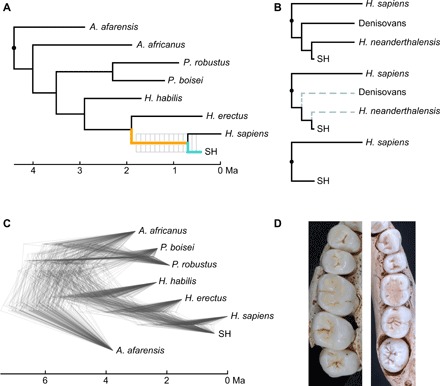Fig. 1. Phylogenetic scenarios and SH dental morphology.

(A) Hominin phylogeny used in the analysis of evolutionary rates (phylogeny-1). The SH branch is represented in teal, and the LCA branch in orange, which are the colors used to represent the evolutionary rates on these two branches in Figs. 4 and 5 and fig. S5. Gray lines represent the different divergence times that have been evaluated. (B) Transformation of the Neanderthal-Denisovan-SH lineage into the SH lineage. (C) Densitree showing a randomly selected sample of 100 phylogenies [of the total sample of 60,000 phylogenies generated by Dembo and colleagues’ Bayesian analysis of hominin phylogenetic relationships (20)]. Dembo’s original trees have been pruned to preserve only the species for which dental data are available. The length of the Neanderthal branch has been shortened to reflect the age of the SH branch. (D) Upper and lower postcanine dentition of one representative SH individual (upper dentition is represented on the left). Photo credit: A. Muela, photographs taken at Institute of Health Carlos III.
